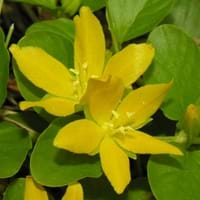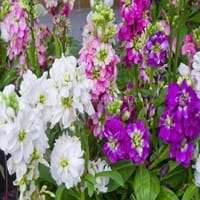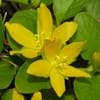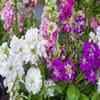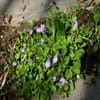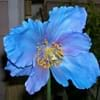Life Span
Perennial
Annual, biennial or perennial
Type
Flowering Plants, Perennial
Perennial
Origin
Europe
Southern Europe, Western Europe, Mediterranean, Turkey, Northern Africa
Types
creeping jenny
Not Available
Habitat
Near ponds, River side, Wet ground
By seashore, Rocky areas, Sandy areas
USDA Hardiness Zone
4-8
6-9
Sunset Zone
1a, 1b, 2a, 2b, 3a, 3b, 4, 5, 6, 7, 8, 9, 14, 15, 16, 17, 18, 19, 20, 21, 22, 23, 24
1a, 1b, 2a, 2b, 3a, 3b, 4, 5, 6, 7, 8, 9, 10, 11, 12, 13, 14, 15, 16, 17, 18, 19, 20, 21, 22, 23, 24
Habit
Spreading
Clump-Forming
Flower Color
Yellow
Purple, Pink, Rose, Coral, Peach, Blue Violet
Flower Color Modifier
Bicolor
Bicolor
Fruit Color
Not Available
Not Available
Leaf Color in Spring
Green
Gray Green
Leaf Color in Summer
Green
Gray Green
Leaf Color in Fall
Green
Gray Green
Leaf Color in Winter
Light Green
Light Green
Leaf Shape
Ovate
Oblanceolate , Ovate
Plant Season
Spring, Summer, Fall
Spring, Summer, Fall
Sunlight
Full Sun, Partial Sun, Partial shade, Full Shade
Full Sun, Partial Sun
Type of Soil
Clay, Loam
Loam, Sand
The pH of Soil
Acidic, Neutral
Neutral, Alkaline
Soil Drainage
Average
Well drained
Bloom Time
Late Spring, Early Summer
Spring, Late Spring, Early Summer, Summer
Tolerances
Drought
Drought
Where to Plant?
Container, Ground, Pot
Ground
How to Plant?
Stem Planting
reseeds, Seedlings
Plant Maintenance
Medium
Medium
Watering Requirements
Requires a lot of watering, Requires regular watering
Do Not over Water
In Summer
Lots of watering
Lots of watering
In Spring
Moderate
Moderate
In Winter
Average Water
Average Water
Soil pH
Acidic, Neutral
Neutral, Alkaline
Soil Type
Clay, Loam
Loam, Sand
Soil Drainage Capacity
Average
Well drained
Sun Exposure
Full Sun, Partial Sun, Partial shade, Full Shade
Full Sun, Partial Sun
Pruning
Remove damaged leaves, Remove dead branches, Remove dead leaves
Remove damaged leaves, Remove dead branches, Remove dead leaves
Fertilizers
All-Purpose Liquid Fertilizer
All-Purpose Liquid Fertilizer
Pests and Diseases
Pests and diseases free
Fungal Diseases, Slugs
Plant Tolerance
Drought
Drought
Flower Petal Number
Single
Single, Double
Foliage Texture
Medium
Medium
Foliage Sheen
Glossy
Matte
Attracts
Not Available
Bees, Hummingbirds
Allergy
Asthma
Not Available
Aesthetic Uses
Beautification, Bouquets, Used for decorating walls, fences, gates, hedges, etc.
Beautification
Beauty Benefits
Not Available
Not Available
Environmental Uses
Provides ground cover
Air purification
Medicinal Uses
Diarrhea
Antidote, Aphrodisiac, Diuretic
Part of Plant Used
Flowers, Leaves
Flowers, Leaves, Seedpod
Other Uses
Used as Ornamental plant
Used as a dye
Used As Indoor Plant
No
No
Used As Outdoor Plant
Yes
Yes
Garden Design
Container, Edging, Groundcover, Hanging Basket, Mixed Border, Water Gardens
Bedding Plant, Container, Cutflower, Mixed Border
Botanical Name
LYSIMACHIA nummularia 'Goldilocks'
MATTHIOLA incana
Common Name
Creeping jenny, moneywort, herb twopence and twopenny thot
Stock, Tenweeks stock, Gillyflower, Brompton Stock
In Hindi
Lysimachia Nummularia
Common stock
In German
Lysimachia Nummularia
Garten-Levkoje
In French
Lysimaque nummulaire
Common stock
In Spanish
Lysimachia nummularia
Matthiola incana
In Greek
Λυσιμαχία nummularia
Common stock
In Portuguese
Lysimachia nummularia
Matthiola incana
In Polish
tojeść rozesłana
Common stock
In Latin
Lysimachiam nummularia
Matthiola incana
Phylum
Tracheophyta
Magnoliophyta
Class
Magnoliopsida
Magnoliopsida
Order
Ericales
Capparales
Family
Primulaceae
Brassicaceae
Genus
Lysimachia
Matthiola
Clade
Angiosperms, Asterids, Eudicots
Angiosperms, Eudicots, Rosids
Tribe
Not Available
Not Available
Subfamily
Not Available
Not Available
Number of Species
Not Available
Not Available
Season and Care of Lysimachia Nummularia and Common Stock
Season and care of Lysimachia Nummularia and Common Stock is important to know. While considering everything about Lysimachia Nummularia and Common Stock Care, growing season is an essential factor. Lysimachia Nummularia season is Spring, Summer and Fall and Common Stock season is Spring, Summer and Fall. The type of soil for Lysimachia Nummularia is Clay, Loam and for Common Stock is Loam, Sand while the PH of soil for Lysimachia Nummularia is Acidic, Neutral and for Common Stock is Neutral, Alkaline.
Lysimachia Nummularia and Common Stock Physical Information
Lysimachia Nummularia and Common Stock physical information is very important for comparison. Lysimachia Nummularia height is 510.00 cm and width 60.00 cm whereas Common Stock height is 30.00 cm and width 35.60 cm. The color specification of Lysimachia Nummularia and Common Stock are as follows:
Lysimachia Nummularia flower color: Yellow
Lysimachia Nummularia leaf color: Green
Common Stock flower color: Purple, Pink, Rose, Coral, Peach and Blue Violet
- Common Stock leaf color: Gray Green
Care of Lysimachia Nummularia and Common Stock
Care of Lysimachia Nummularia and Common Stock include pruning, fertilizers, watering etc. Lysimachia Nummularia pruning is done Remove damaged leaves, Remove dead branches and Remove dead leaves and Common Stock pruning is done Remove damaged leaves, Remove dead branches and Remove dead leaves. In summer Lysimachia Nummularia needs Lots of watering and in winter, it needs Average Water. Whereas, in summer Common Stock needs Lots of watering and in winter, it needs Average Water.
